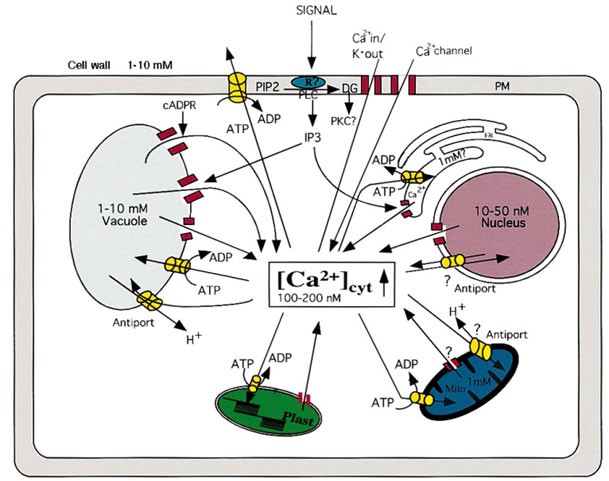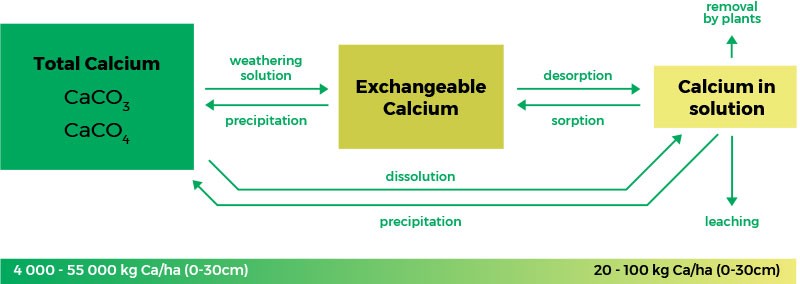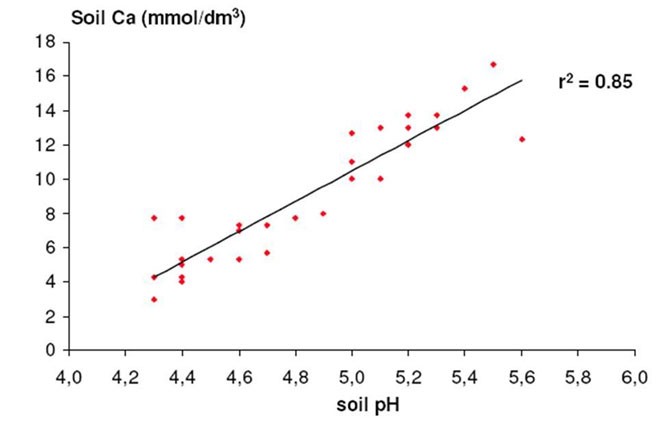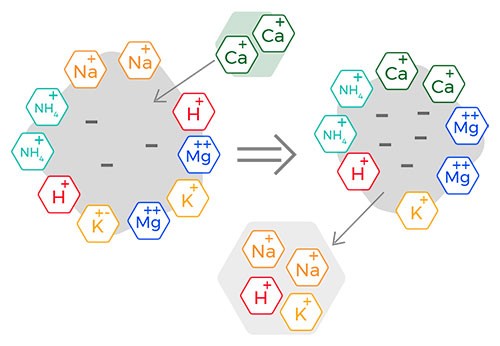Calcium: The Brick of It All
Calcium (Ca) is the backbone of every living organism, including plants. Although a plant’s needs for calcium can be as high as its needs for nitrogen and potassium, it is classified as a secondary nutrient. In this post, we examine the importance of calcium and the factors that can limit its availability to plants.
As one of the main components of a plant’s cell wall, calcium regulates several processes related to growth and development, water and nutrient uptake, hormonal balance, flowering, seed production and fruit quality.


Because it is immobile in the plant, a constant supply of calcium is required throughout the season to prevent a variety of physiological disorders in both the plant and the fruit. These tomatoes are displaying blossom end rot, a typical symptoms of calcium deficiency.
Along with magnesium, calcium in the soil contributes to the control of pH and, despite its ubiquitous presence, only a very limited amount of calcium is available in soil solution for growing plants.

Conditions that affect calcium availability are often linked to the acidity of the soil and the level of magnesium, either low or high.

Higher application of ammonium fertilizer also reduces the availability of calcium. This has consequences on soil structure, permeability and infiltration, especially in saline areas where calcium helps displace sodium and free-up more potassium. Figure four, below, demonstrates how calcium is effective in displacing sodium (Na) from soil colloids. With calcium fertilization, more sodium can be leached, and potassium becomes more available in saline soils.

OMEX Has the Solution
OMEX offers a variety of products which can be used to supply soluble calcium to crops at key stages of development. When seeding pulses, for example, consider using a seed-applied primer such as Pulse Primer or Pulse Pak to trigger nodulation. Calcium can also be supplied to a variety of crops with CalMax or C3 foliars at key stages in the growing season.
For more information on how to ensure your crop’s nutritional requirements are being met, talk to your OMEX representative today. Your rep can provide you with a guided nutrient management strategy which includes seed-applied Primers, in-furrow Starters, in-crop Foliars and other specialty products, chosen to meet your crops’ specific needs.
To find out more about the role calcium plays in plant development, how it impacts nitrogen, phosphorus and potassium uptake, and how to identify and correct a calcium deficiency, read Know Your Nutrients: Calcium.
